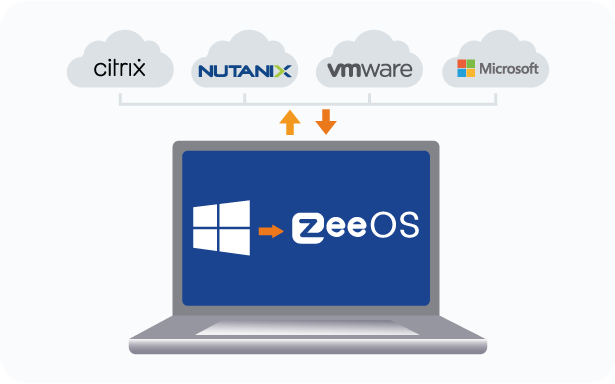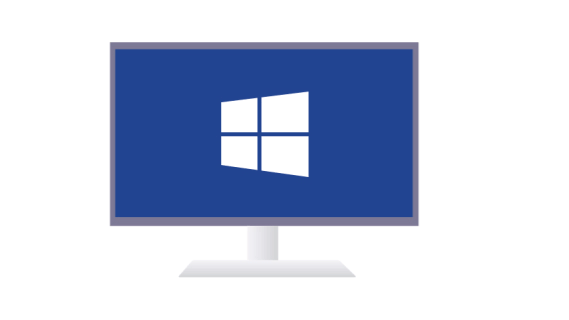
Repurpose any PC into a Thin or Zero Client with ZeeTransformer
ZeeTransformer gives you 2 options to convert PCs into secure Thin or Zero Client endpoints
Option 1
Temporarily repurpose a PC by running ZeeOS from a USB & return to the old OS once the USB is removed


Option 2
Permanently repurpose a PC by replacing the existing OS with secure ZeeOS operating system

The process to convert PCs to ZeeTerm Thin or Zero Client endpoints is simple:

Benefits of Converting PCs to Thin or Zero Clients
Technical Points
Need More Info on ZeeTerm Components?
Simple, Secure, and Easy to Manage Endpoints on the Hardware of Your Choice
Use Cases
Bring your own device (BYOD)
With advances in cloud computing, mobile device management, and VDI, many IT departments are moving towards a policy where users can bring their own devices.
This usually frees up the IT department from dealing with technical issues relating to the device hardware. However in doing so, the IT department still have to make sure that users access their workspaces in a secure, controlled, and reliable way. With ZeeTransformer USB, these devices can be booted with a thin client software, right into a work environment where employees cannot tangle business and personal work.
The company’s data is now safe from any foul play and users are unlikely to stumble into unintended issues as they will be kept in their workspace while they perform their duties.
Validation of thin and zero client endpoints
Switching to a full thin client software infrastructure can feel like a change for users, teams and financial departments:
- Users, because the transition to a new workstation requires psychological, organizational adjustments than can impact work productivity and alter the image of the company
- IT teams, because they have to deal with a radical change of infrastructure that will have many consequences in terms of IT management
- Financial departments, because renewing a whole estate of workstations has a huge impact on the budget.
Therefore, you do not want to take it lightly. You need to access the impact of thin clients on the organisation while minimizing risks. Opting for PC repurposing solution ZeeTransformer allows you to turn PCs into thin clients and test a thin client workstation on your current hardware: progressive change for the user, balanced workload for the IT teams, along with a risk free financial strategy.
Modernizing obselete or complex os and simplifying the work of it teams
A heterogeneous farm of workstations (both old & new PC, personal devices, old thin clients of various brands, chromebooks…) can be difficult to manage. Various performances, incompatibility, different OS versions, security breaches… Most entreprises use Windows operating systems, and these require constant patching, updates, anti-virus solutions, all of which comes at a high cost.
Moreover, Windows being a resource hungry operating system, obsolete workstations with Windows tend to have a shortened longevity with frequent hardware renewal needs.
By moving to VDI, or remote / cloud apps and desktops, IT teams make a huge leap in simplifying and centralizing their management tasks. Only one step remains: to have a secure and easy to manage endpoint.
Thanks to PC repurposing solution ZeeTransformer, you turn PCs into thin clients and standardize your infrastructure’s operating system by transforming all of these endpoints into Zeeterms. With Zeeterm’s powerful and secure ZeeOS operating system your data will be safe. Complement that with ZeeConf’s central management console, you are able to centrally update as many ZeeTerm end points as your company requires. Choose all the benefits of a ZeeTerm endpoint without the financial and organizational burden of hardware change.

